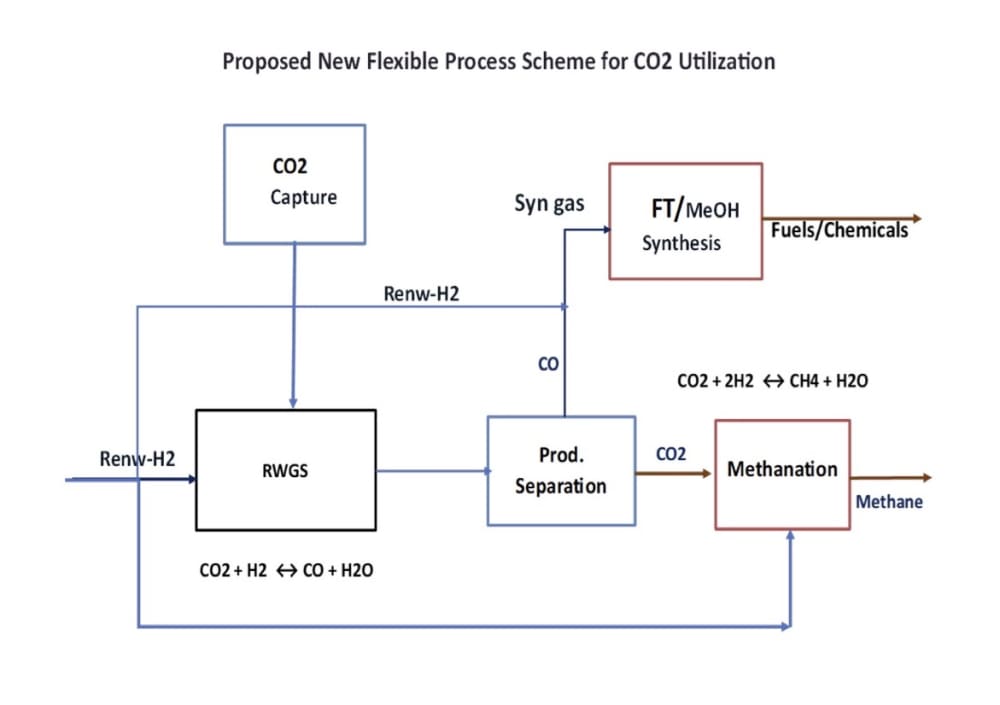Integrated and flexible process schemes are proposed for utilization of CO2 as a sustainable feedstock with the objective to mitigate its harmful environmental impact. The selection of appropriate process configuration for a given location would require techno-economic evaluation and life-cycle assessment. Development of processes which can help reduce the accumulation of emitted carbon dioxide in the environment require immediate efforts. Capture of carbon dioxide from different sources and its conversion to fuels and chemicals should be important aspect of short- and long-term strategy to mitigate global warming. Although a number of chemical, biochemical, photocatalytic and electrochemical methods are being developed to mitigate the greenhouse gas emissions, most of these processes have not been proven yet for large scale applications. However, technologies based on hydrogenation of CO2 by renewable hydrogen such as methanation and reverse water gas shift are promising for large industrial scale applications.
Driven by renewable hydrogen, the reverse water gas shift reaction (RWGS) can convert CO2 into carbon monoxide (CO). The more reactive CO can be mixed with excess hydrogen in any given ratio to obtain syngas which can be further processed to diverse chemicals and fuels via methanol or FT synthesis. However, the RWGS reaction is limited by thermodynamics and excessive high temperatures (600-800 C) are required to increase CO2 conversion. There is growing interest in CO2 methanation as a power-to-gas technology and carbon capture and storage system. Renewable methane produced via CO2 methanation, and water electrolysis is an effective and energy intensive method of capturing energy generated by renewables. The CH4 gas produced from methanation is compatible with existing pipelines and infrastructure. There is a need to consider different options including integration of methanation and RWGS process to achieve desired results of heat integration and energy efficiency. For example, RWGS can be conducted at lower temperatures (say around 700 C) and the unreacted CO2 can be sent to methanation which operates at much lower temperatures (~300 C). The process configuration as shown in Figures below can yield a spectrum of desirable products.
Like this entry?
-
About the Entrant
- Name:Anand Prakash
- Type of entry:individual
- Patent status:none

